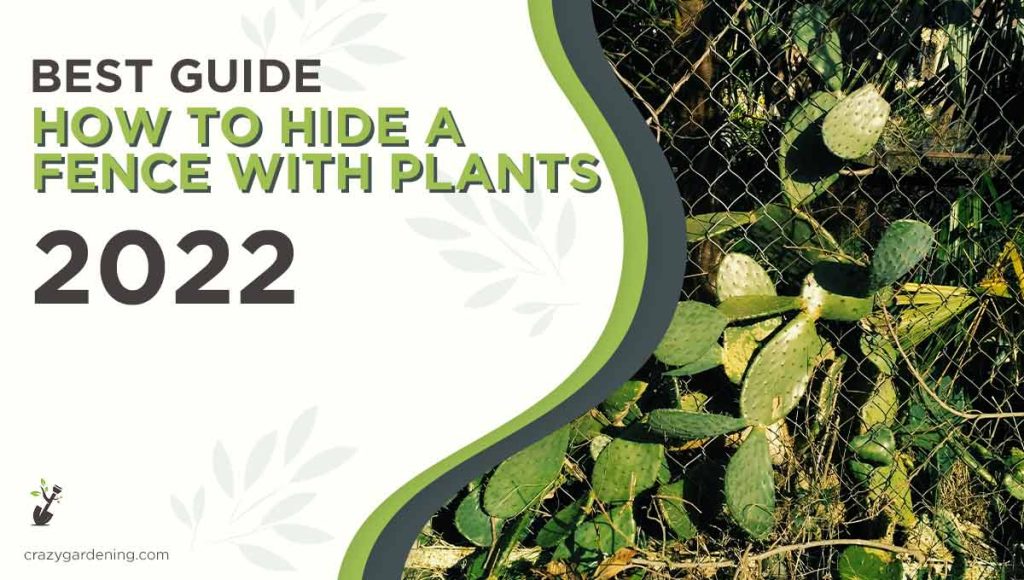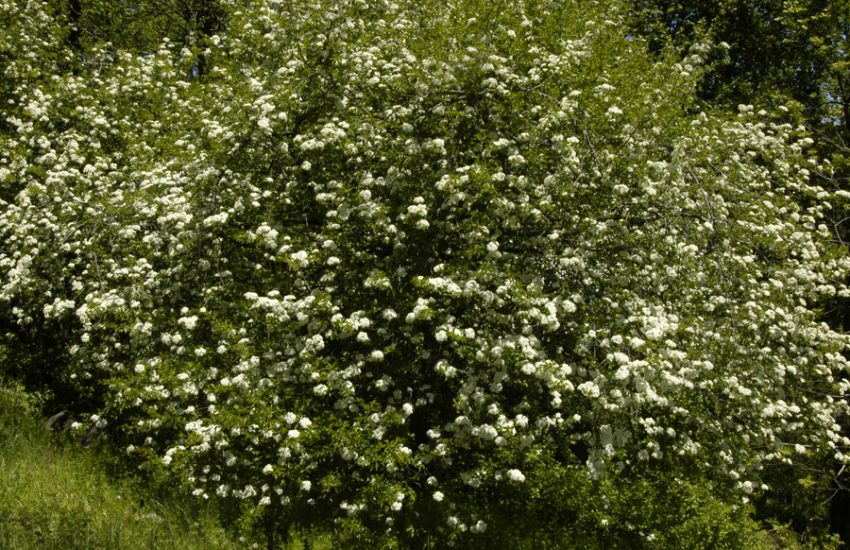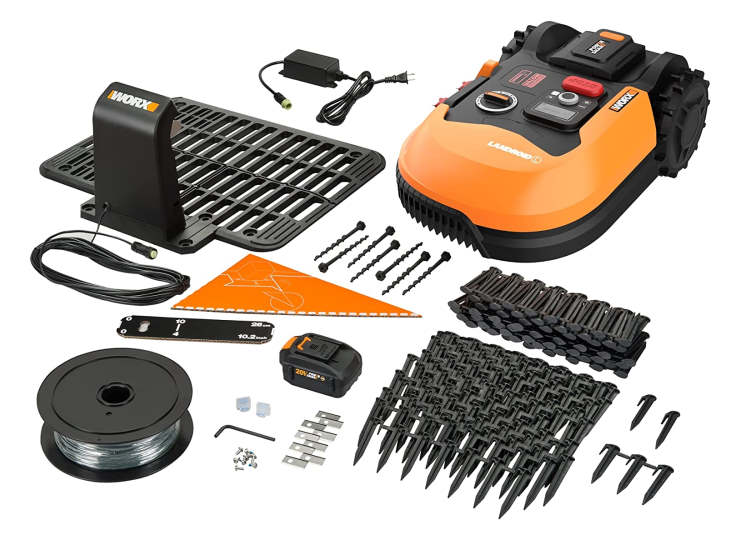Best Ways to Hide a Fence with Plants [Amazing Hacks 2025]
When it comes to fencing, some people prefer a more natural look that blends in with the surrounding environment. Fence are the great option in keeping animals out and safe your property and garden.
Different types of plants are used to cover and camouflage a fence. If you’re one of those people, then this blog post is for you!
We’ll show you how to hide your fence with plants so that it becomes practically invisible. Keep reading to learn more.
What are the Best Plants to Cover a Fence?
There are many types of plants that can be used to hide your fence.
Climbers
Climbers are a great option because they can quickly cover up an unsightly fence.
Popular choices include ivy, bougainvillea, and jasmine. If you live in a cold climate, then evergreen vines like clematis are a good option.
Curtain Creeper (Parthenocissus quinquefolia)
This fast-growing plant is a great choice for hiding unsightly fences. It can grow up to 20 feet in length and has small, dark green leaves.
The curtain creeper is a versatile plant that can be used in various ways to cover your fence. You can let it grow wild and untamed, or you can train it to grow in a certain way.
Trumpet Creeper (Campsis radicans)
The trumpet creeper is another good choice for covering fences. It’s a fast-growing plant that can reach up to 30 feet in length.
Trumpet creepers have large, dark green leaves and beautiful trumpet-shaped flowers that come in various colors, such as orange, red, and yellow.
The Boston Ivy (Parthenocissus tricuspidata)
Boston ivy is a fast-growing plant that can reach up to 50 feet in length.
It has small, dark green leaves and produces small, black berries. Boston ivy is a great choice for covering fences because it grows quickly and easily.
Wisteria (Wisteria sinensis)
Wisteria is a beautiful climbing plant that can reach up to 30 feet in length. It has long, purple flowers that bloom in the springtime.
Wisteria is a great choice for covering fences because it’s a fast-growing plant that is very easy to care for.
The Arctic Kiwi (Actinidia kolomikta)
The Arctic kiwi is a fast-growing plant that can reach up to 20 feet in length. It has dark green leaves with white and pink variegation.
The Arctic kiwi is a great choice for covering fences because it’s a beautiful plant that is very easy to care for.
Crimson Glory Vine (Vigna Caracalla)
The Crimson Glory vine is a fast-growing plant that can reach up to 30 feet in length. It has dark green leaves and beautiful, crimson-colored flowers that bloom in the summertime.
The crimson glory vine is a great choice for covering fences because it’s a beautiful plant that is very easy to care for.
Trailing Abutilon (Abutilon striatum)
The trailing abutilon is a fast-growing plant that can reach up to 10 feet in length. It has dark green leaves and beautiful, bell-shaped flowers that come in various colors, such as yellow, orange, and red.
There are also more plants that you can use to hide your fence in an easy and quick way.
Best Ways to Hide a Fence with Plants
There are several ways to hide a fence with plants, including:
1. Using climbing plants such as ivy or clematis to cover the fence completely.
2. Planting tall shrubs or trees in front of the fence to create a natural barrier.
3. Installing a trellis or lattice panel and training climbing plants to grow up it.
4. Creating a mixed border with a variety of plants, including tall and bushy species, to create a layered effect.
5. Using hanging baskets or window boxes filled with trailing plants to soften the look of the fence.
When selecting plants for this purpose, it’s important to consider factors such as the amount of sunlight the area receives, the soil type and drainage, and the specific growing conditions of each plant species.
It’s also important to choose plants that are appropriate for your climate and that won’t cause damage to the fence over time.

How to Hide a Fence with Plants?
Select Plant
The first step is to choose the right plants for the job. As we mentioned before, there are many different types of plants that can be used to cover a fence.
Some of the best choices include climbers, curtain creeper, trumpet creeper, Boston ivy, wisteria, Arctic kiwi, crimson glory vine, and more.
Once you’ve selected the plants you want to use, it’s time to get started on hiding your fence.
Paint Your Fence
If you want to make your fence completely invisible, then you’ll need to paint it. This will help the plants blend in with the fence and make it less noticeable.
You can use any color of paint you want, but we recommend using a dark green or brown. This will help the plants camouflage the fence and make it less noticeable.
Carefully Plant the Seeds or Bulbs
The next step is to plant the seeds or bulbs of your chosen plants.
This can be done by hand, or you can use a tool such as a trowel. Be sure to plant the seeds or bulbs at the correct depth and spacing, according to the instructions on the package.
Water Regularly
Once the plants are in the ground, it’s important to water them regularly.
This will help them grow and thrive. Watering can be done by hand with a watering can or hose, or you can set up an irrigation system.
Fertilize
Fertilizing your plants will give them a boost and help them grow more quickly.
There are many different types of fertilizer available, so be sure to choose one that is specifically designed for the type of plant you are using.
Prune and Train
As your plants grow, you may need to prune them to keep them under control. You can also train them to grow in a certain way, such as up a trellis or along a wire fence.
Enjoy your beautiful fence
Once your plants have grown and you’ve achieved the look you want, sit back and enjoy your beautiful fence. With a little bit of care and attention, you can have a fence that is both functional and attractive.
What are the Benefits of Hiding Fence with Plants?
There are many benefits to hiding your fence with plants.
* It can provide privacy and increase the level of security around your home or business.
* It can beautify your property and make it more attractive.
* It can help to protect your fence from the elements, such as sun, wind, and rain.
* It can help to reduce noise pollution.
* It can help to create a natural barrier between you and your neighbor’s property.
Hiding your fence with plants is a great way to improve the look of your property and increase its value. If you’re looking for a way to add privacy, security, and beauty to your home or business, then consider hiding your fence with plants.
Conclusion
As you can see, there are many different types of plants that can be used to hide your fence.
All of the plants listed above are fast-growing and easy to care for, so you’ll have no trouble keeping them healthy and happy.
Now that you know how to hide your fence with plants, then use this guide for your own benefit and create a beautiful and private space on your property.
Hopefully, this guide has given you some helpful tips and tricks on how to achieve the look you want.
FAQs
Question
What is the best plant to hide a fence?
Answer
There are different types of plants that makes your fence beautiful. But the best depend on your personal preferences. Some popular options include climbing plants such as Clematis montana, rambling roses, and honeysuckle, which can cover fences with beautiful blooms and foliage.
Question
How do you hide fences in the garden?
Answer
There are many different ways to hide fences in the garden. You can use plants, paint, or other materials to camouflage the fence and make it less noticeable.
Question
How do you hide a hideous fence?
Answer
You can hide a hideous fence by using climbing plants, tall shrubs or trees, a trellis or lattice panel, a mixed border, or hanging baskets filled with trailing plants.
Question
How can I make my fence more attractive?
Answer
You can make your fence more attractive by painting or staining it, adding decorative elements like planters or wall art, incorporating lighting, or using plants to soften the look of the fence.
Question
What plant grows around fence?
Answer
There are many plants that can grow around a fence, including climbing plants like ivy, clematis, and honeysuckle, as well as shrubs like boxwood and euonymus.
Question
What is the fastest growing plant to cover a fence?
Answer
There are several fast-growing plants that can cover a fence quickly, including climbing roses, trumpet vine, clematis and wisteria. The specific species and growth rate may depend on the climate and growing conditions.


